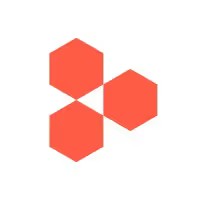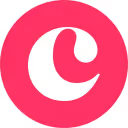Momentum Alternatives
Find the right Momentum alternative. This guide compares 10 tools, with analysis of features, pricing, and use cases to inform your choice.
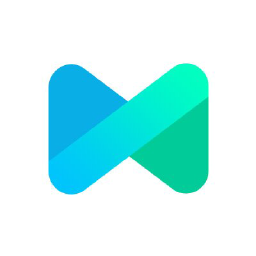
You might be using Momentum for good reasons. It excels at automating sales workflows and integrating with tools like Slack and Salesforce. This helps teams keep their data in sync and reduce manual work, which is a big plus for sales efficiency.
However, like any tool, it has limits. Some users report a learning curve or find certain features missing. We've analyzed the best alternatives based on G2 reviews to help you compare. Let's get started.
Consider 11x for Your Sales Team
If your team is exploring digital workers to handle sales tasks, 11x provides autonomous agents for this purpose. You can see how they operate and what they can do for your revenue operations.
11x is a GTM platform where our AI agents autonomously run your sales process. Our agent, Alice, finds prospects, conducts outreach on email and LinkedIn, and updates your CRM. Julian qualifies inbound leads and books meetings.
We consolidate tools for data enrichment, outreach, and email warmup. Our platform unifies these functions, so you do not need separate point solutions.
Momentum Alternatives
We will now examine the top Momentum alternatives. Each review covers the price, main features, and the specific advantages and drawbacks when compared to Momentum.
1) Aha!
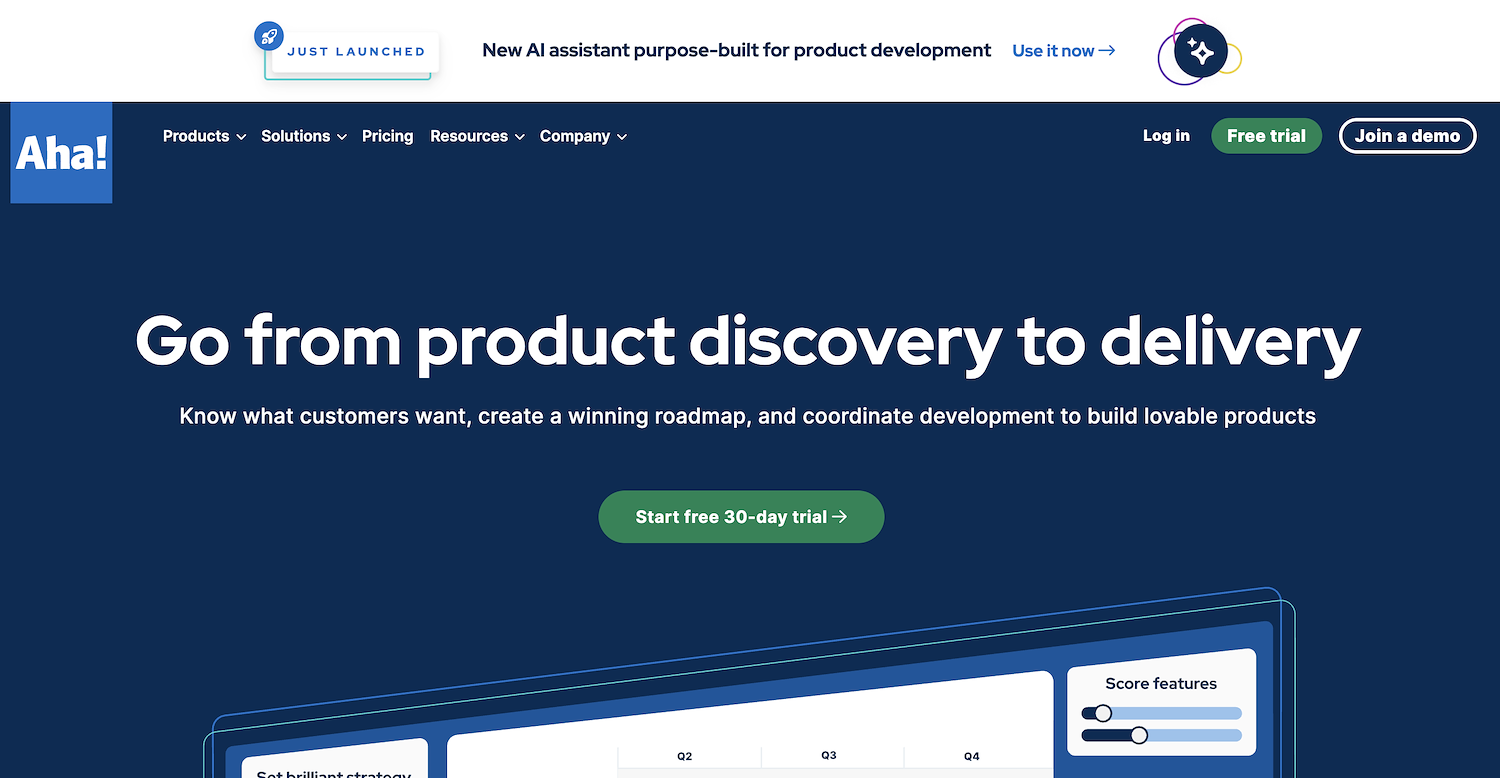
Aha! is a suite of product-development software. It unifies strategy, customer research, roadmaps, and project management on a single platform. The system provides end-to-end traceability to link strategy to code and supports cross-functional project management for marketing or IT projects. It helps coordinate development and build products.
The platform offers over 200 integrations with tools such as Jira, Slack, and Salesforce to connect different parts of a workflow.
Aha!'s Main Features
- The platform provides a suite of nine integrated applications, including tools for roadmaps, customer discovery, and idea management.
- It offers customer research tools for scheduling interviews, transcribing them, and linking quotes to product ideas.
- The system enables end-to-end traceability, which connects high-level strategy to individual features, tasks, and code.
- Visual planning tools are available, such as Gantt charts, Kanban boards, and capacity planning charts for workload management.
How Aha! Compares to Momentum
Average Review score: 4.4/5 stars based on 336 G2 reviews.
- Aha! provides a full suite for product development, with tools for roadmaps and idea management. This is different from Momentum, which automates sales workflows.
- The platform offers customer research tools to manage interview schedules and analyze feedback. Momentum, in comparison, does not have a dedicated feature for product discovery.
- It enables end-to-end traceability that connects high-level strategy to individual tasks. This provides a more holistic view of product development than Momentum's sales process focus.
- The tool includes visual project management features like Gantt charts and capacity plans. This differs from Momentum's approach, which automates actions between integrated sales applications.
Drawbacks of Aha! Compared to Momentum
- Aha! does not offer native sales workflow automation. Unlike Momentum, it cannot automatically trigger actions in sales tools, which may require manual work from your sales team for tasks like data sync.
- It focuses entirely on the product development lifecycle, from roadmaps to feature tracking. This is different from Momentum's go-to-market approach, which supports sales outreach and lead qualification processes.
- The platform's integrations, such as with Salesforce, are for linking customer feedback to product ideas. They do not automate sales tasks, which is a primary function of Momentum.
- Some users report a steep learning curve due to its many product management features. This complexity can be a drawback for a sales team that only needs a focused automation tool like Momentum.
Pricing and Cost-Effectiveness
Aha!'s Premium plan is $59 per user per month, making it more affordable than Momentum's entry-level Business plan at $69. Both platforms offer an enterprise-tier plan at $99 per user per month, aligning their costs for more advanced feature sets.
2) Productboard
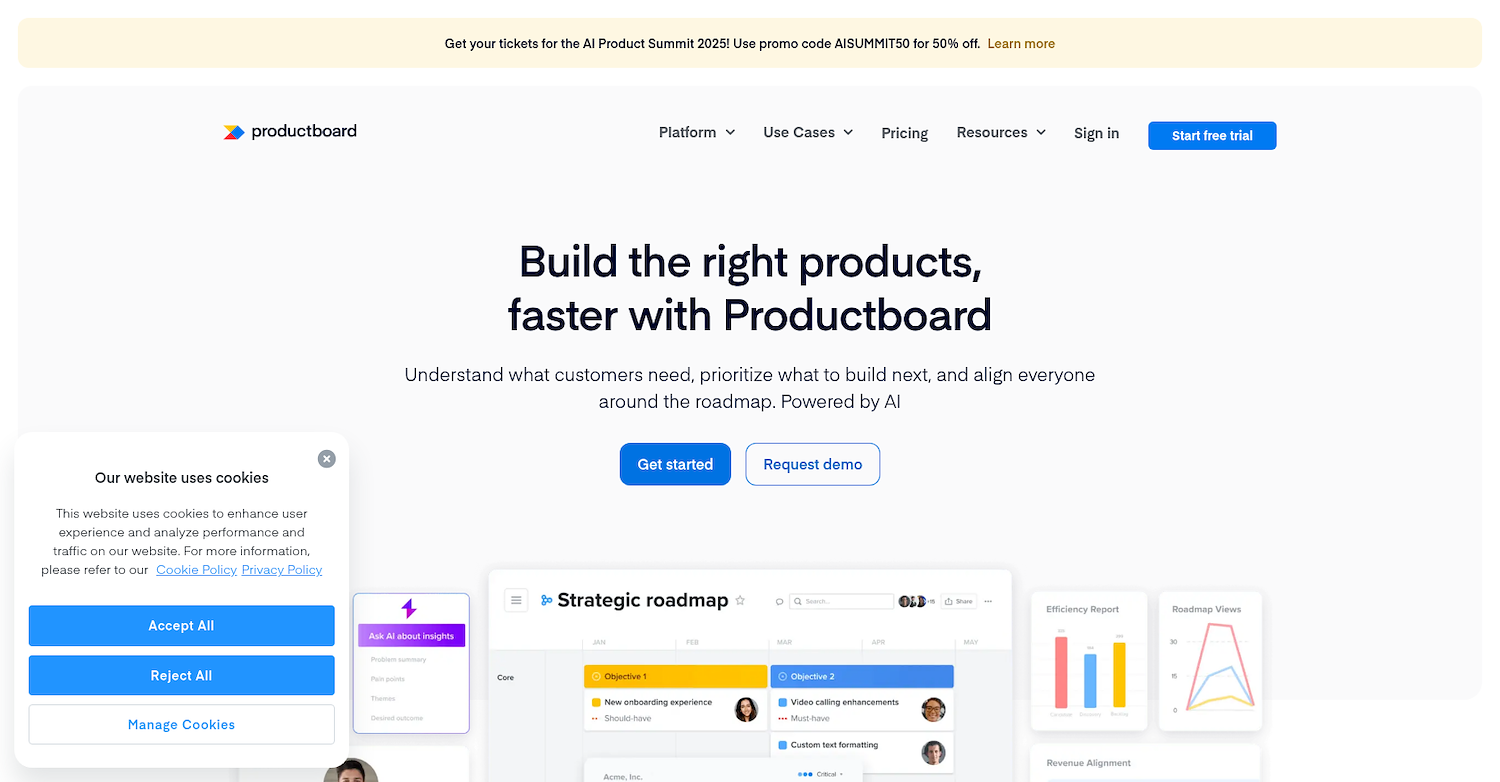
Productboard is an AI-powered product management platform. It serves as a single source of truth for customer feedback, which enables data-driven prioritization. The system provides real-time, collaborative roadmaps to help teams build products faster and with more confidence.
It consolidates customer feedback into one system and prioritizes features based on strategic value. The platform also tracks feature progress and communicates status to stakeholders to align the organization.
Productboard's Main Features
- The platform uses AI to analyze customer feedback at scale and recommend next steps for product development.
- It provides live, collaborative roadmaps that display vision, strategy, goals, and the health of features.
- The system combines customer insights with business metrics to help teams decide which features to build next.
- It centralizes customer data and feedback in one workspace to identify trending user needs.
How Productboard Compares to Momentum
Average Review score: 4.3/5 stars based on 251 G2 reviews.
- Productboard centralizes customer feedback to identify user needs, a function different from Momentum's focus on sales workflow automation.
- It uses AI to analyze customer feedback for product insights, whereas Momentum automates sales tasks without this type of analysis.
- The platform provides live, collaborative roadmaps to visualize product strategy, a feature not found in Momentum's sales-focused toolset.
- This tool helps prioritize product features based on customer insights, which is different from Momentum's focus on prioritizing sales actions.
Drawbacks of Productboard Compared to Momentum
- Productboard does not offer sales workflow automation. This is different from Momentum, which automates tasks between sales tools, and may require your team to handle data synchronization manually.
- Its integrations focus on collecting customer feedback for product development. This is unlike Momentum, where integrations automate sales actions like updating lead statuses or creating tasks in a CRM.
- The tool is designed for product managers, so it lacks features for sales outreach or lead qualification. These functions are central to Momentum's platform for go-to-market teams.
Pricing and Cost-Effectiveness
Productboard is more cost-effective, with its Essentials plan at $19 per user per month and Pro plan at $59. Both are priced lower than Momentum's entry-level Business plan at $69, making Productboard a more economical option for teams that need its product management capabilities.
3) airfocus
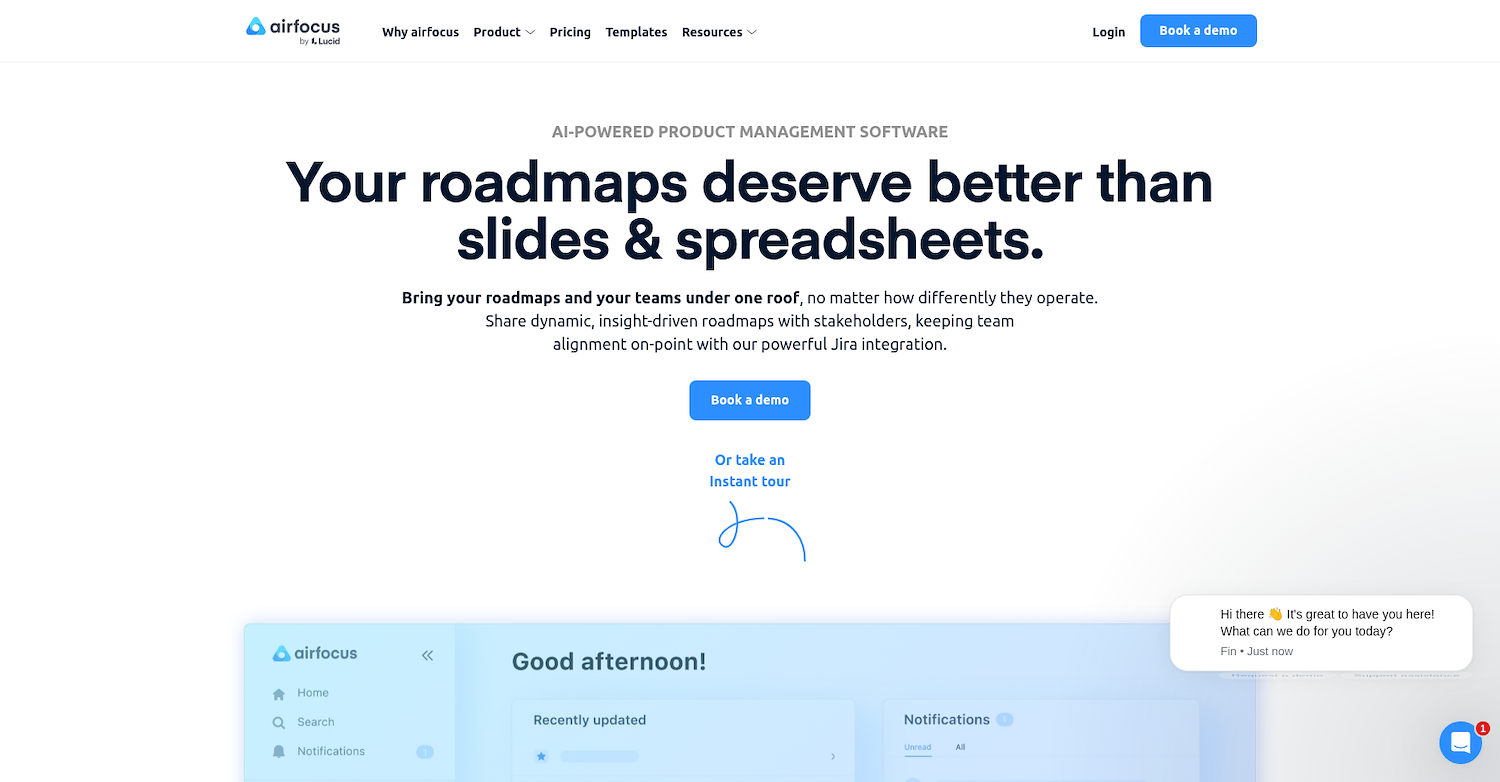
airfocus is an AI-powered product-management platform. It replaces spreadsheets with a dynamic workspace to build and share product roadmaps. The tool provides a single source of truth with deep Jira integration and customizable fields.
It helps harmonize workflows across different teams, such as engineering and design, within one platform. This gives stakeholders real-time visibility into objectives and progress.
airfocus's Main Features
- The platform provides a unified workspace to centralize OKRs, epics, user stories, and delivery data.
- It creates dynamic, shareable roadmaps that can be filtered to suit different audiences.
- A prioritization engine uses scoring frameworks to help teams make evidence-based decisions on features.
- The tool offers portfolio management to roll up multiple product roadmaps into high-level views for leadership.
How airfocus Compares to Momentum
Average Review score: 4.4/5 stars based on 141 G2 reviews.
- airfocus provides dynamic, shareable roadmaps for product strategy. This is different from Momentum, which automates sales tasks rather than handling long-term product planning.
- The tool includes a prioritization engine with scoring frameworks to help teams make evidence-based decisions on features. Momentum, in contrast, automates sales actions without a comparable feature for product prioritization.
- It offers portfolio management to combine multiple product roadmaps into a high-level view for leadership. This provides a strategic overview that is not present in Momentum's sales-centric workflow tools.
- airfocus creates a unified workspace for OKRs, user stories, and delivery data. This is different from Momentum, which integrates sales tools to sync data but does not serve as a central hub for product strategy elements.
Drawbacks of airfocus Compared to Momentum
- airfocus does not offer native sales workflow automation. Unlike Momentum, it cannot automatically trigger actions in sales tools, which may require your team to handle tasks like data sync manually.
- The platform's integrations focus on product development tasks, such as linking to Jira. This is different from Momentum, where integrations automate sales actions like updating lead statuses in a CRM.
- It is designed for product managers, so it lacks features for sales outreach or lead qualification. These functions are central to Momentum's platform for go-to-market teams.
Pricing and Cost-Effectiveness
airfocus is more cost-effective at the entry-level, with its Core plan at $59 per user per month, compared to Momentum's Business plan at $69. This makes it a more economical option for teams that need product management features. For details on its Scale and Enterprise plans, check airfocus's official website.
4) Roadmunk
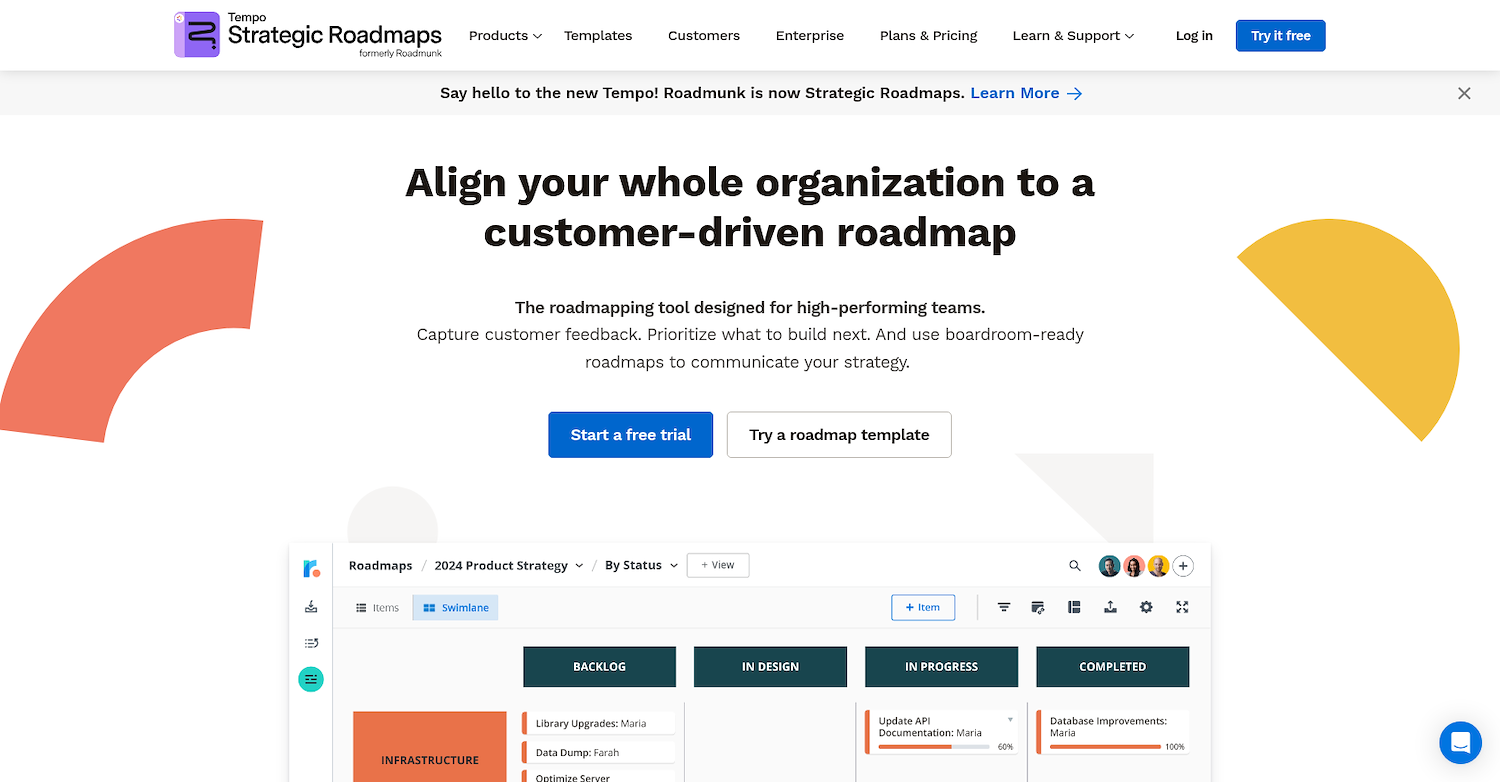
Roadmunk is a platform for product roadmaps. It provides a central place for teams to capture customer feedback and ideas. The system connects to other tools through integrations to support workflows. This allows teams to build customer-driven roadmaps and share them with stakeholders to communicate product direction.
Roadmunk's Main Features
- The platform creates timeline and swimlane roadmaps with one-click export options to URL, PNG, or interactive HTML.
- It offers built-in prioritization models, such as Value vs. Effort and RICE, along with custom weighted-scoring frameworks.
- A central feedback inbox collects and organizes user input, which can be gathered through public or controlled portals.
- The system provides a library of over 35 pre-built templates for product, marketing, and technology roadmaps.
How Roadmunk Compares to Momentum
Average Review score: 4.0/5 stars based on 98 G2 reviews.
- Roadmunk allows teams to build visual roadmaps, such as timelines and swimlanes. This is different from Momentum, which automates sales workflows and does not offer product visualization tools.
- The platform includes prioritization frameworks, like Value vs. Effort, to help decide what to build next. Momentum, in contrast, focuses on executing sales tasks rather than prioritizing product features.
- It provides a central inbox to capture customer feedback and link it to product ideas. This product-centric function is different from Momentum's sales-centric system, which automates outreach and lead updates.
- The tool offers more than 35 roadmap templates to speed up the planning process. This is a feature for product teams, whereas Momentum provides tools for sales teams to build automation workflows.
Drawbacks of Roadmunk Compared to Momentum
- Roadmunk does not offer sales workflow automation. This is different from Momentum, which automatically updates a CRM, so your sales team might need to handle these tasks manually.
- The tool is designed for product planning and lacks features for sales outreach. It cannot qualify leads or automate follow-ups, which are core functions in Momentum.
- Its integrations focus on product development tools like Jira. Unlike Momentum, it cannot trigger actions in a sales pipeline, which can sometimes slow down the process from lead to close.
Pricing and Cost-Effectiveness
Roadmunk is more cost-effective, with its Starter plan at $19 and Business plan at $49 per user per month. This makes it a more economical choice compared to Momentum's entry-level Business plan at $69. Both platforms offer a high-tier plan at $99 per user per month, aligning their costs for advanced features.
5) Craft.io
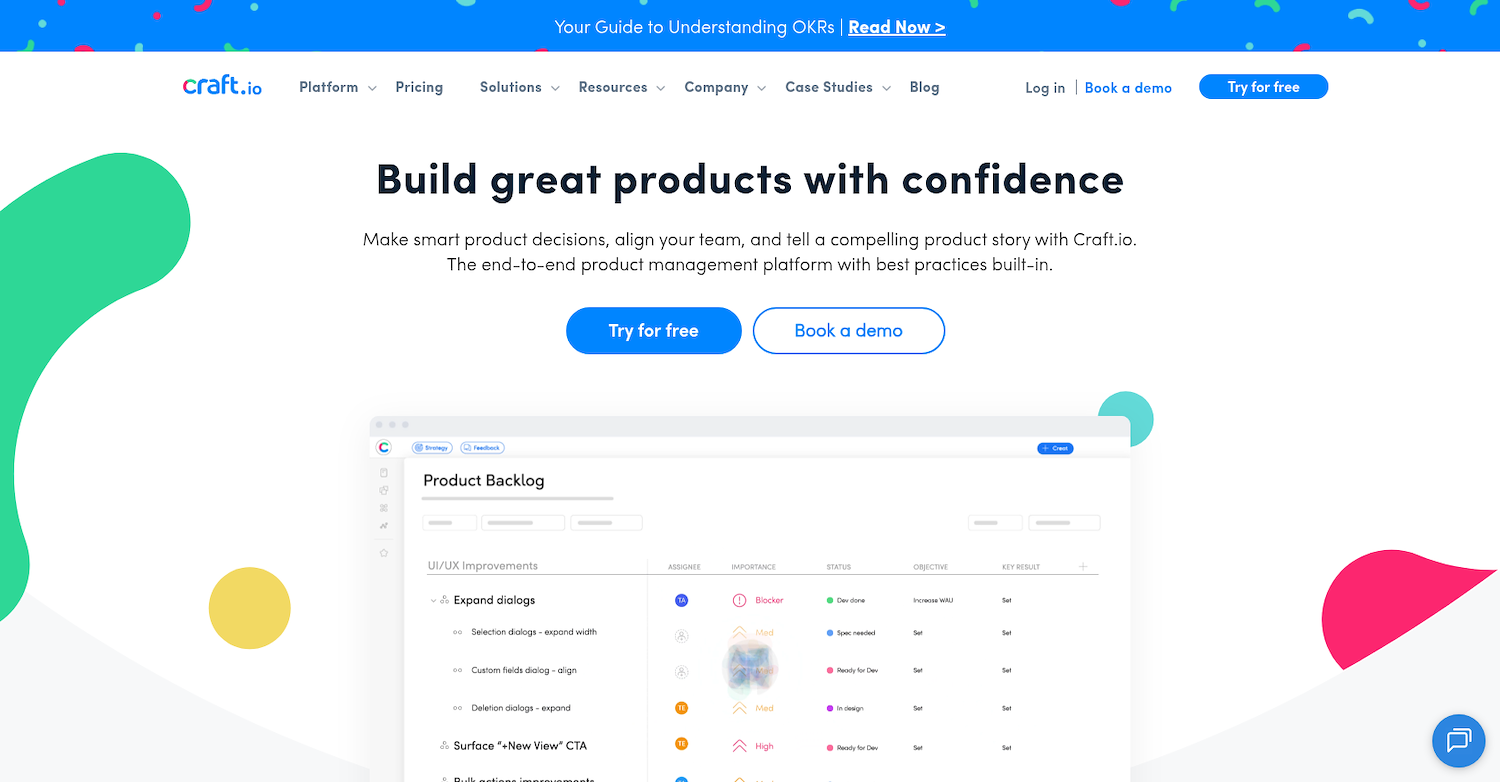
Craft.io is a product management platform that serves as a single system of record. It connects strategy, plans, and roadmaps, and offers tools for prioritization and capacity plans.
The platform integrates with development tools like Jira and design tools such as Figma. A two-way sync keeps teams aligned, and it supports custom workflows to match a team's process.
Craft.io's Main Features
- Links objectives and key results directly to initiatives and features to create OKR-based roadmaps and dashboards.
- Provides a prioritization engine with multiple built-in scoring models for evidence-based ranking of work items.
- Offers capacity planning with automatic visualization of team bandwidth and pushes committed items straight to Jira.
- Embeds a Guru layer with hundreds of best-practice templates, views, and guidance in the user interface.
How Craft.io Compares to Momentum
Average Review score: 4.5/5 stars based on 73 G2 reviews.
- Craft.io links objectives and key results to features, which creates OKR-based roadmaps. This is different from Momentum, which focuses on automating sales tasks instead of strategic product planning.
- The platform includes a prioritization engine with scoring models to help rank work items. Momentum does not have a similar feature for product decisions; it automates sales actions.
- It offers capacity planning to visualize team bandwidth and sends committed items to development tools like Jira. This is a product development function, while Momentum automates sales workflows.
- The tool provides a Guru layer with best-practice templates and guidance. This helps product teams standardize processes, a feature not found in Momentum's sales automation toolset.
Drawbacks of Craft.io Compared to Momentum
- Craft.io does not offer sales workflow automation. Unlike Momentum, it cannot trigger actions in sales tools, so your team may need to handle tasks like data synchronization manually.
- The tool is built for product managers and lacks features for sales outreach or lead qualification. Momentum, in contrast, provides specific agents to handle these go-to-market tasks.
- Its integrations focus on product development tools. This is different from Momentum, where integrations automate sales processes, such as updates to lead status in a CRM.
Pricing and Cost-Effectiveness
Craft.io offers a more accessible entry point with its Starter plan at $19 per user per month, significantly lower than Momentum's $69 Business plan. Its Pro plan is $79 per user per month, placing it between Momentum's Business and Transformation ($99) tiers.
Try 11x for Your Sales Team
If your team is interested in digital workers for sales, see what 11x can do. Our autonomous agents handle prospect discovery, outreach, and CRM updates. This lets your sales representatives concentrate on conversations with qualified leads and deal closure.
With 11x, we use AI to run your sales process. Our agent, Alice, finds accounts and handles outreach, while Julian qualifies leads and books meetings. We consolidate tools for data, outreach, and email warmup, so you do not need separate point solutions.
To see our platform in action, book a demo.
6) ProdPad
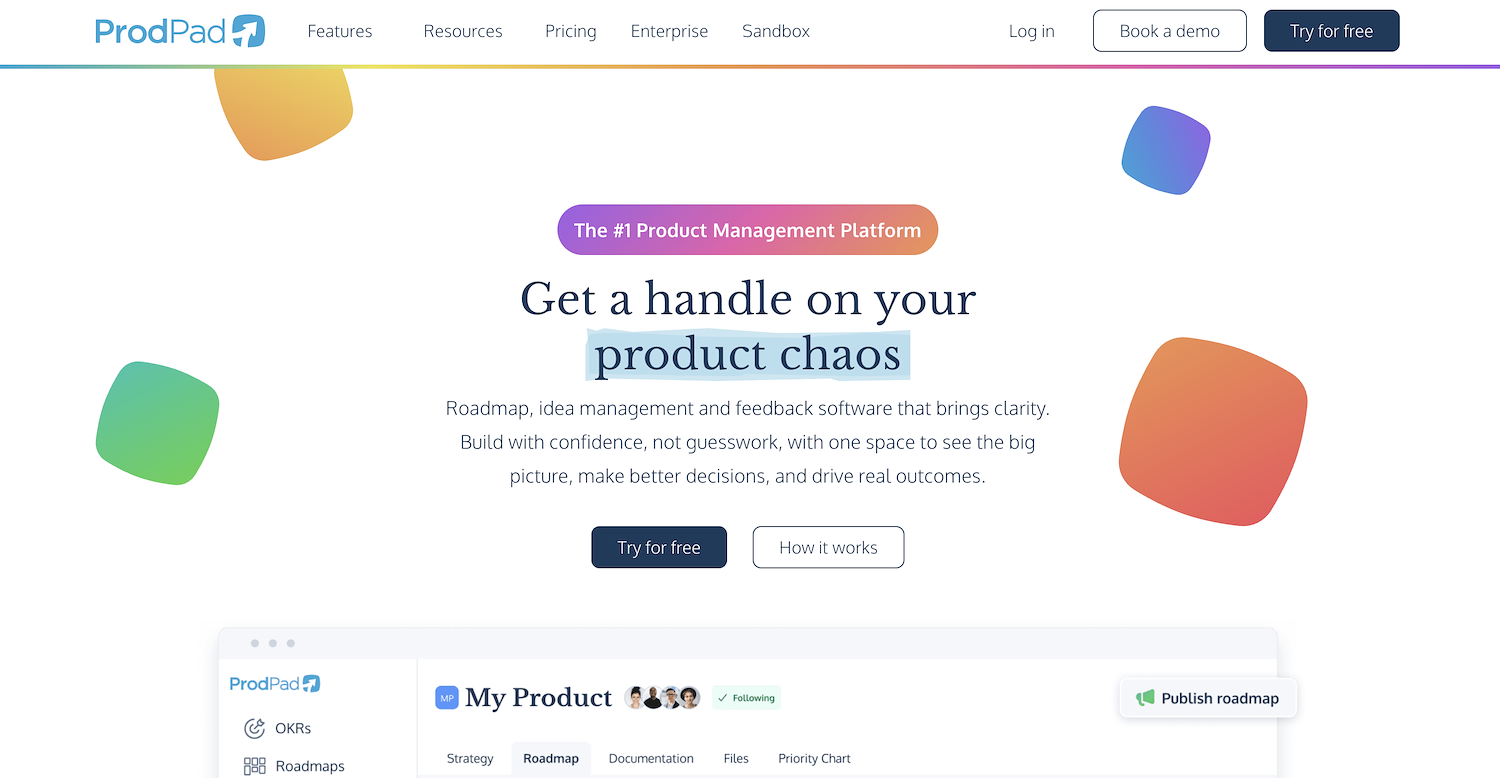
ProdPad is a product management platform. It helps teams collect ideas, create lean roadmaps, and manage a product backlog. The system connects with development tools like Jira and Trello to support workflows across different teams.
This integration pushes ideas to development and pulls status updates back into ProdPad. The process keeps product and development teams aligned on progress.
ProdPad's Main Features
- The platform builds outcome-focused roadmaps and provides different views for various stakeholders.
- It includes an idea management system to capture, prioritize, and connect ideas to business outcomes.
- An AI assistant, CoPilot, automates writing, organizing, and summarizing to accelerate product management workflows.
- The system automatically surfaces themes hidden in customer feedback through a feature called Signals.
How ProdPad Compares to Momentum
Average Review score: 4.2/5 stars based on 94 G2 reviews.
- ProdPad builds outcome-focused roadmaps with different views for various stakeholders. This is different from Momentum, which automates sales workflows instead of product planning.
- The platform includes an idea management system to capture and connect ideas to business outcomes. Momentum, in contrast, focuses on sales execution and lacks a dedicated feature for product ideation.
- Its AI assistant, CoPilot, helps with writing and summarizing product documents. This is a different application of AI compared to Momentum's automation of sales tasks between different tools.
- The tool automatically finds themes in customer feedback with a feature called Signals. Momentum syncs sales data but does not offer a comparable tool for analyzing qualitative customer input.
Drawbacks of ProdPad Compared to Momentum
- ProdPad does not offer sales workflow automation. Unlike Momentum, it cannot automatically trigger actions in sales tools, which may require your team to handle tasks like data synchronization manually.
- Its integrations focus on product development tools like Jira. This is different from Momentum, where integrations automate sales actions, such as creating a task in a CRM when a new lead arrives.
- The tool is built for product planning, so it lacks features for sales outreach. It cannot qualify leads or automate follow-ups, which are core functions in Momentum for go-to-market teams.
Pricing and Cost-Effectiveness
ProdPad uses a modular pricing structure, with its core modules each costing $24 per editor per month. This can be more economical than Momentum's $69 per user per month Business plan if you only need one or two functions. A full suite of ProdPad's features would cost $72 per user, slightly more than Momentum's entry-level tier.
7) Dragonboat
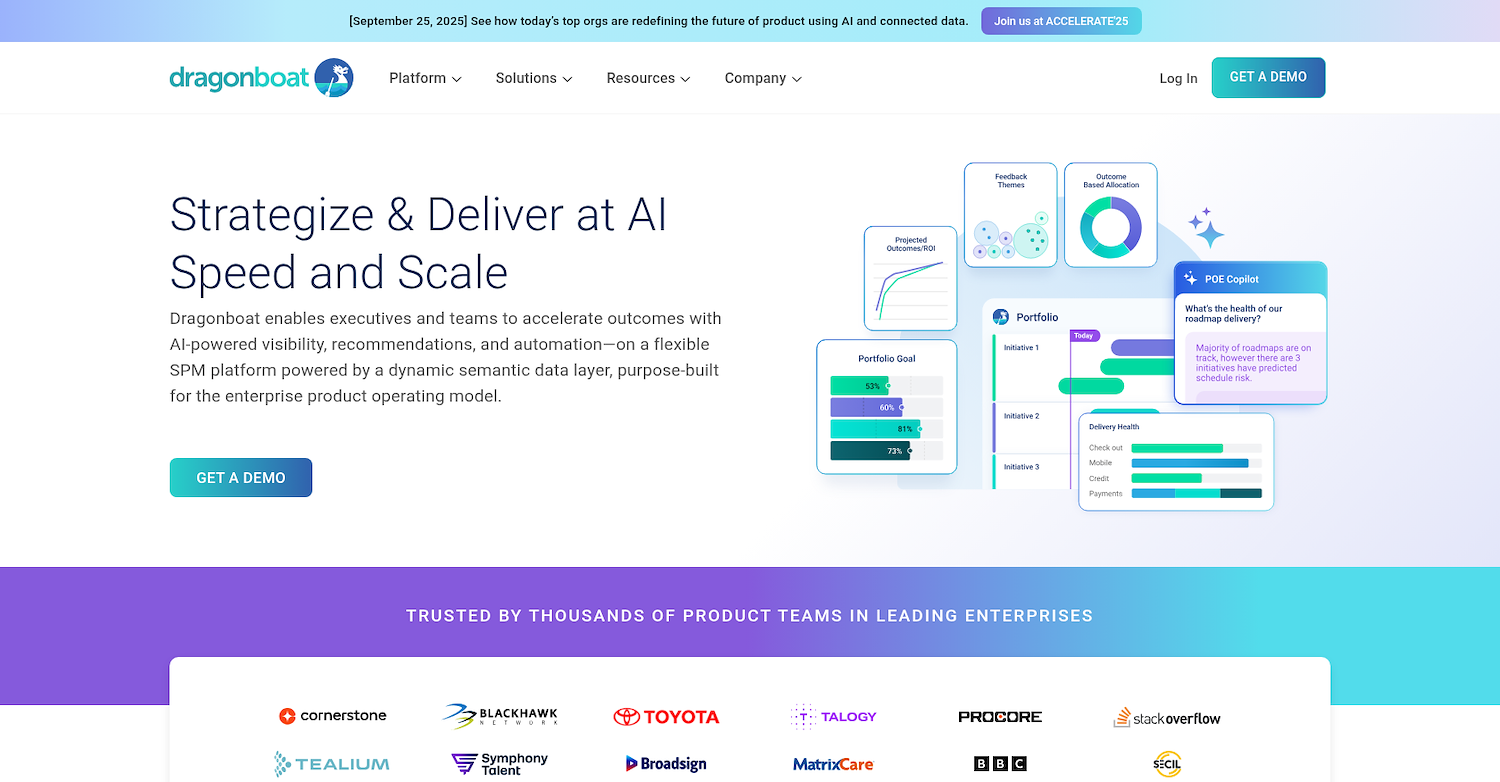
Dragonboat is a product portfolio management platform that connects objectives, strategy, and execution. It provides a central system for outcome-focused roadmaps and resource allocation. The platform supports integrations and workflows to help align product and development teams, which connects plans to delivery.
Dragonboat's Main Features
- The platform provides portfolio intelligence through an AI-powered semantic layer that monitors risks and recommends adjustments.
- It allows teams to import or create OKRs, connect product goals to business metrics, and track outcomes using BI integrations.
- The system offers dynamic roadmapping and visual resource planning with AI-driven scenario analysis to optimize allocation.
- It includes AI assistants to surface portfolio insights, analyze feedback, track delivery risk, and generate resource planning scenarios.
How Dragonboat Compares to Momentum
Average Review score: 4.8/5 stars based on 15 G2 reviews.
- Dragonboat provides portfolio intelligence with an AI layer to monitor risks and recommend adjustments. This is different from Momentum, which automates sales tasks without a portfolio overview.
- The platform connects product goals to business metrics to track outcomes. Momentum, in contrast, integrates sales tools to automate data sync but does not have a system for tracking OKRs.
- This tool offers visual resource planning with AI-driven scenario analysis to optimize team allocation. Momentum automates sales actions but does not provide resource planning for product teams.
- It uses AI assistants to surface portfolio insights and analyze feedback. This contrasts with Momentum's function, which is to automate workflows between different sales applications.
Drawbacks of Dragonboat Compared to Momentum
- Dragonboat does not offer sales workflow automation. This is different from Momentum, which automates tasks between sales tools, so your team may need to handle data synchronization manually.
- Its integrations focus on product development tools. Unlike Momentum, they do not automate sales actions, which means your team cannot automatically update lead statuses in a CRM.
- The platform is built for product managers and lacks features for sales outreach. It cannot qualify leads or automate follow-ups, which are core functions in Momentum for go-to-market teams.
Pricing and Cost-Effectiveness
Dragonboat does not publicly list its pricing, which prevents a direct comparison to Momentum's plans that start at $69 per user per month. For specific pricing details, you will need to visit Dragonboat's official website.
8) Trello
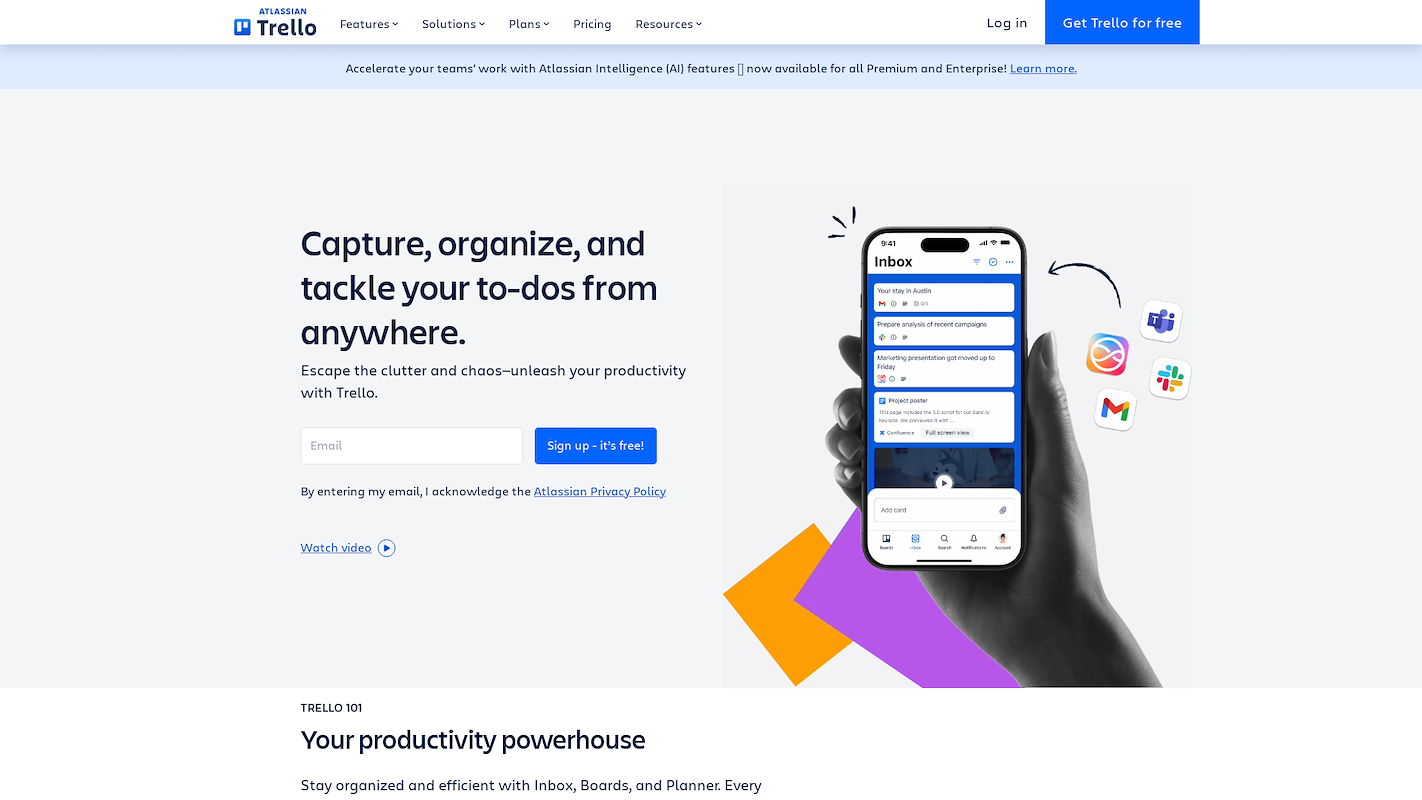
Trello is a visual collaboration tool. It organizes work into boards, lists, and cards to give teams a shared perspective on projects. This structure helps manage tasks and workflows from start to finish.
The platform integrates with other applications through Power-Ups. These add features and connect to tools like Slack, Jira, and Google Drive. This function allows teams to customize their workflow and centralize information.
Trello's Main Features
- Create and assign tasks, set due dates, and organize them with drag-and-drop functionality.
- Manage work with task prioritization, to-do lists, and recurring tasks.
- Plan projects and visualize the workflow with a project map.
How Trello Compares to Momentum
Average Review score: 4.4/5 stars based on 13,707 G2 reviews.
- Trello uses a visual system of boards, lists, and cards for project management. This differs from Momentum, which automates sales workflows and does not offer a visual project overview.
- The tool offers detailed task management with to-do lists and recurring tasks. In contrast, Momentum automates sales tasks but lacks a dedicated interface for general task management.
- It allows users to organize tasks with a simple drag-and-drop function. This creates a flexible workflow, which is different from Momentum's structured, trigger-based automation for sales.
- Trello provides a project map to visualize the entire workflow. Momentum does not have this project planning feature, as its focus is on sales action execution.
Drawbacks of Trello Compared to Momentum
- Trello does not offer native sales workflow automation. This means sales teams may need to manually update their CRM, a process Momentum automates between tools like Slack and Salesforce.
- The tool is designed for general project management, so it does not include features for sales outreach. It cannot qualify leads or automate follow-ups, which are core functions in Momentum.
- Its integrations focus on general productivity, not sales-specific actions. For instance, an action in Trello cannot trigger a sequence in an outreach tool, which is a key difference from Momentum's workflow capabilities.
Pricing and Cost-Effectiveness
Trello is highly cost-effective, offering a free plan, a Standard plan at $5, and a Premium plan at $10 per user per month. This makes it a much more economical option than Momentum, whose entry-level plan costs $69 per user per month.
9) Monday.com

Monday.com is a Work OS where teams build custom workflow apps. It centralizes work, processes, and tools on one platform. The system supports use cases from project management to CRM.
Teams connect their tools to automate tasks and create end-to-end workflows. This helps align departments and manage work types in one space, which improves visibility.
Monday.com's Main Features
- The platform supports task creation and assignment, with features for setting due dates, prioritization, and drag-and-drop organization.
- It provides tools for project planning and monitoring, offering different views to visualize workflows.
- The system includes dashboards to centralize and display project information.
How Monday.com Compares to Momentum
Average Review score: 4.7/5 stars based on 13,641 G2 reviews.
- Monday.com provides a flexible Work OS to build custom workflow apps for various departments. This is different from Momentum, which is designed specifically for sales workflow automation.
- The platform offers multiple project views, such as Kanban and Gantt charts, for visual project monitoring. This provides a broader project management capability compared to Momentum's focus on automating individual sales tasks.
- It includes customizable dashboards that centralize project information from different teams. Momentum syncs data between sales tools but does not offer a comparable high-level dashboard for general work management.
- This tool has detailed task management features, including assignment, due dates, and prioritization. This is different from Momentum, where tasks are automated actions within a sales workflow rather than items in a project plan.
Drawbacks of Monday.com Compared to Momentum
- Monday.com does not provide native sales workflow automation. Compared to Momentum, which automates actions between sales tools, a team might need to build custom solutions on Monday.com for tasks like data sync from Slack to Salesforce.
- The platform lacks autonomous agents for specific sales tasks. Momentum offers agents for prospecting and lead qualification, which means a sales team using Monday.com may need to handle these outreach activities manually or with other tools.
- It does not consolidate specialized go-to-market tools. Momentum includes features for data enrichment and email warmup, while on Monday.com, teams might need separate subscriptions for these specific sales functions.
Pricing and Cost-Effectiveness
Monday.com is more cost-effective, with its Basic, Standard, and Pro plans priced at $9, $12, and $19 per user per month, respectively. All of these are significantly lower than Momentum's entry-level Business plan at $69 per user per month, making Monday.com a more economical choice for general work management.
10) ClickUp
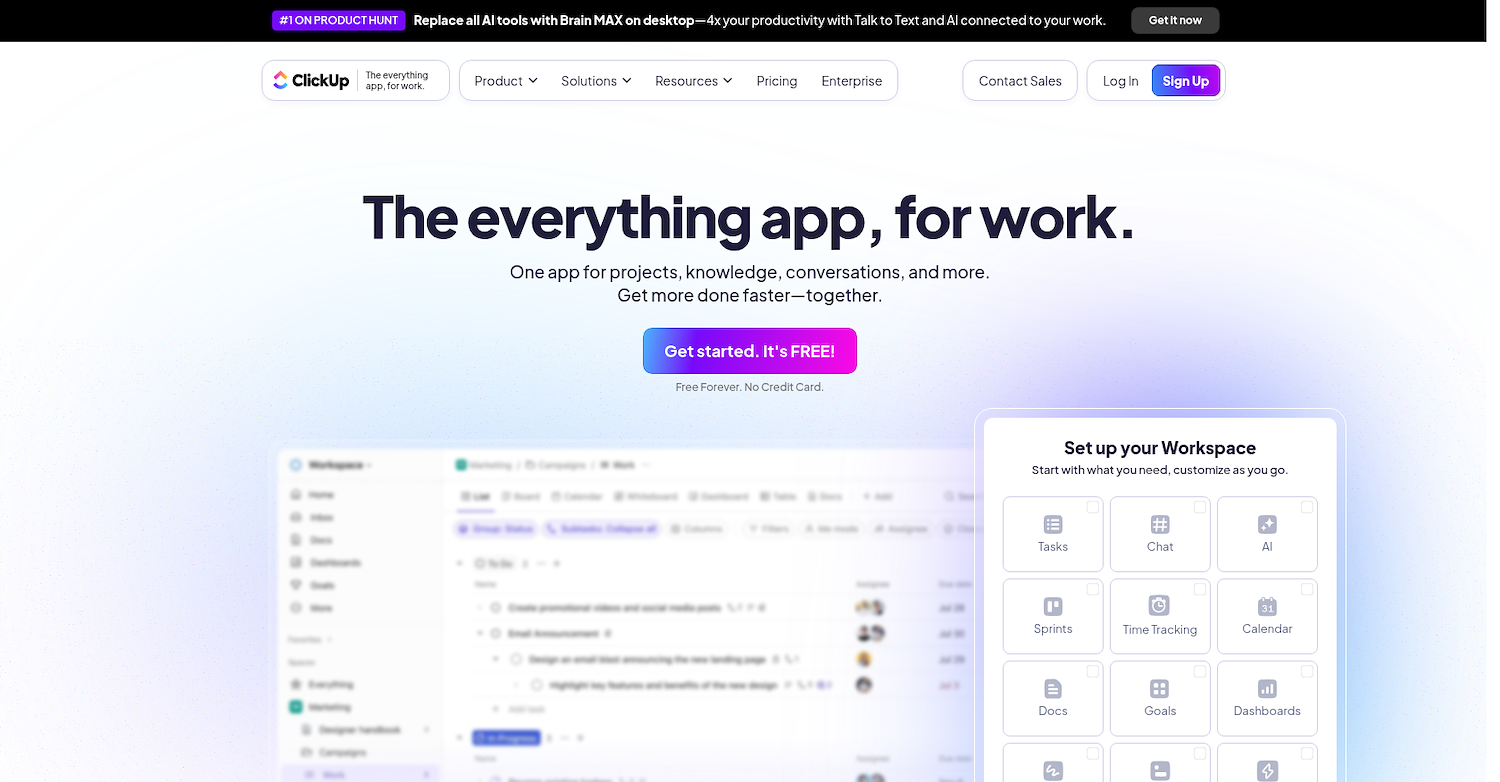
ClickUp is a productivity platform that brings tasks, documents, and goals into one place. The system is customizable for different workflows. Teams connect their tools to the platform to build integrated processes for use cases like project management, engineering, or sales.
ClickUp's Main Features
- The platform provides task management features, including creation, assignment, due dates, and prioritization.
- It offers workflow customization with drag-and-drop functionality and automation capabilities.
- Users can set dependencies between tasks to manage project timelines.
How ClickUp Compares to Momentum
Average Review score: 4.7/5 stars based on 10,388 G2 reviews.
- ClickUp offers a comprehensive work platform that includes documents, goals, and project management. This is different from Momentum, which focuses on automating sales-specific workflows.
- It provides a flexible system that teams can customize for many uses, from project management to CRM. This is different from Momentum's specific focus on automating sales processes.
- The platform includes detailed task management with features like dependencies. This allows for complex project planning, which is different from Momentum's automation of individual sales actions.
- This tool unifies documents, reminders, and goals in one workspace. This is different from Momentum, which connects sales tools but does not offer a central place for general work management.
Drawbacks of ClickUp Compared to Momentum
- ClickUp's automation is for general project management, not sales-specific workflows. Unlike Momentum, which has pre-built automations for sales, teams might need to build these workflows from scratch in ClickUp.
- The platform lacks autonomous agents for sales tasks like prospecting or lead qualification. Momentum provides these agents, so a sales team using ClickUp may need to handle these activities manually or with other tools.
- It does not consolidate specialized go-to-market tools. Momentum includes data enrichment and email warmup, so users on ClickUp might need separate subscriptions for these sales functions.
Pricing and Cost-Effectiveness
ClickUp is more cost-effective, with a free plan, an Unlimited plan at $7, and a Business plan at $12 per user per month. These options are all significantly lower than Momentum's entry-level Business plan, which costs $69 per user per month.
Which One Should You Go With?
Choosing the right Momentum alternative depends on many variables specific to your team's needs. This guide shared several options to help you make an informed decision.
If your sales team is looking for autonomous agents to handle tasks, 11x offers a platform for this purpose. Our agents manage prospecting, outreach, and CRM updates, allowing your team to focus on closing deals.


